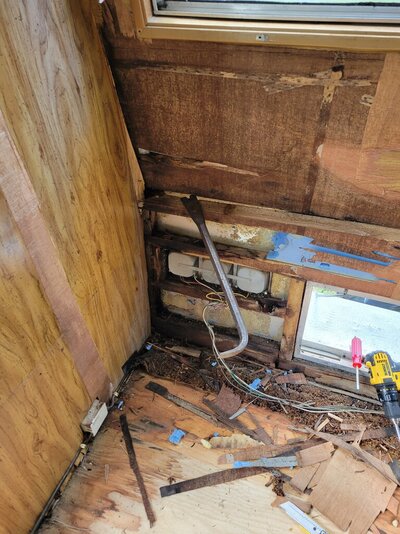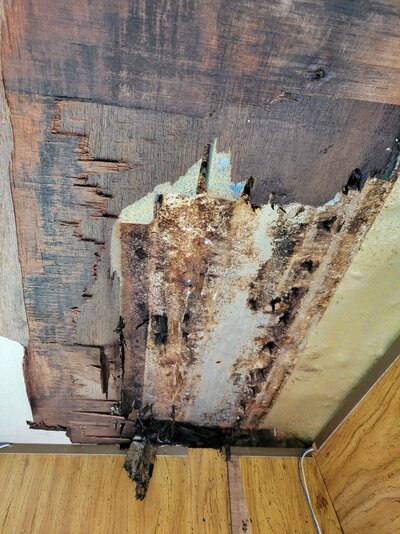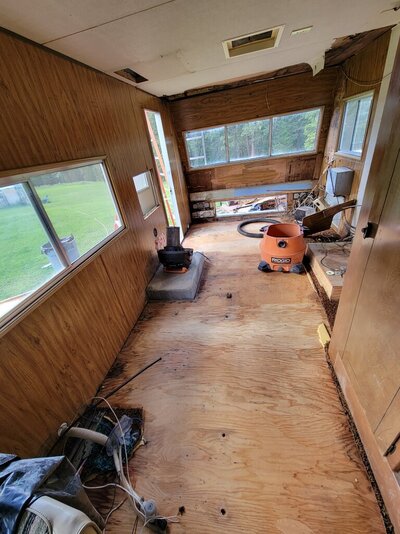Lazy Bear Express
Member
Good morning! I just posted a quick introduction in the newbie thread, but this is where I believe I will be residing for quite a few months.
We just acquired a '74 Midas Mini on a Dodge chassis and are in the process of taking her down to 'studs' and rebuilding her. The previous owner had purchased her new, made some modifications (different heater, second gas tank and probably some other stuff we just haven't figured out yet) and then drove from Montana to Alaska somewhere and back. After that it was barely used. 34k miles on it... but a lot of water damage. We tore into the back corner and found quite a few pinholes in the roof, as well as areas not sealed correctly after the mods.
So we need to remove, clean and replace. Paneling, floors and ceiling will be replaced. We are also needing to replace the back wall framing structure and possibly some on the side and roof.
What I am worried about is the integrity of the shell as we are doing the work. Midas sealed everything together with glue, so getting the rotted frame pieces off the shell is proving to be difficult.
Can anyone share their experience? I'd hate to have to scrap the project because I inadvertently caused something to collapse.
Thanks!
Johna and Jess
We just acquired a '74 Midas Mini on a Dodge chassis and are in the process of taking her down to 'studs' and rebuilding her. The previous owner had purchased her new, made some modifications (different heater, second gas tank and probably some other stuff we just haven't figured out yet) and then drove from Montana to Alaska somewhere and back. After that it was barely used. 34k miles on it... but a lot of water damage. We tore into the back corner and found quite a few pinholes in the roof, as well as areas not sealed correctly after the mods.
So we need to remove, clean and replace. Paneling, floors and ceiling will be replaced. We are also needing to replace the back wall framing structure and possibly some on the side and roof.
What I am worried about is the integrity of the shell as we are doing the work. Midas sealed everything together with glue, so getting the rotted frame pieces off the shell is proving to be difficult.
Can anyone share their experience? I'd hate to have to scrap the project because I inadvertently caused something to collapse.
Thanks!
Johna and Jess





